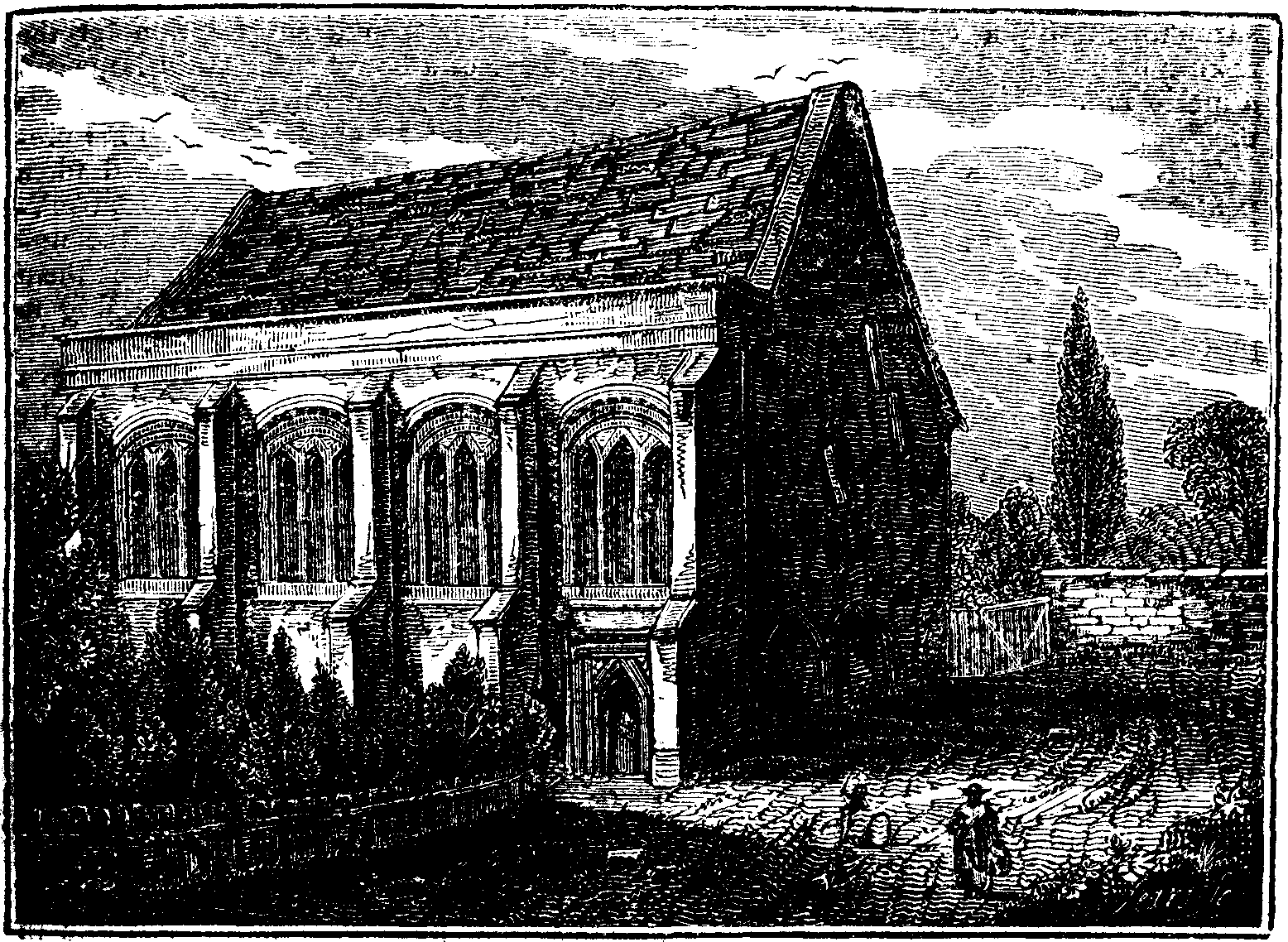Transcriber's note: In "A Churchyard Scene" the word "iugrate" occurs in the original text. This was probably a typographical error, and the correct word was likely "ingrate."
THE MIRROR
OF
LITERATURE, AMUSEMENT, AND INSTRUCTION.
| Vol. 10, No. 266.] | SATURDAY, JULY 28, 1827. | [PRICE 2d. |
CROYDON PALACE.
The palace of Croydon is a building of great antiquity, and was for several centuries the magnificent abode of the haughty dignitaries of Canterbury. At the period of the Conquest, Lanfranc resided here, and most of the decrees and audits of his successors were issued from, and held at, this palace. It was here that Archbishop Parker entertained his queen, Elizabeth and her august court, with great splendour and festivity; as also did the celebrated Whitgift, who refused to accept of the high office of lord chancellor. Courtney received his pall here with great solemnity and pomp in the presence of the chief nobility of the realm; and Chichley, Stafford, Laud, Juxon, Wake, and Herring, made it their frequent residence, and were liberal contributors to its architectural beauties. The remains of this interesting fabric are, with the exception of the hall, composed entirely of brick, occupying a considerable space on the south-west side of Croydon church, and are in some points peculiarly striking in local appearance; but on account of their unconnected state, with the intervening screens of garden walls, &c. the view is confined and partial.
The grand hall is a lofty imposing structure, and at a casual computation appears to contain an area of eight hundred square yards; between which and the cornice, at the height of about fifteen feet, a moulding or frieze is carried over the surface of each wall, from whence, resting their bases on angels bearing, shields variously blazoned, issue in the alternate spaces of twelve feet, five ligneous pillars, supporting immense beams traversing the intervening distances of the confronting sides. The roof is formed of large solid pieces of timber, running diagonally to a point; the upper compartment of which (springing from perpendicular posts), is ribbed so as to make it have the appearance of a polygonal ellipsis.
On the right of the southern entrance an escutcheon, surmounted by a canopy, is fixed at a considerable height from the pavement, and must have had formerly a splendid appearance, as faint traces even now of its original pomp are discernible [pg 66]in the faint glittering of the gilding, and the exquisite symmetry of its execution. The bearings appeared to me as—party per pall,—dexter division.—Sapphire a cross gules ensigned with fleur de lis between six martlets topaz.—Sinister—quarterly sapphire and ruby, first and third, three fleur de lis; topaz, second and fourth, three lions passant gardant of the same, supported by two angels, and surmounted by a coronet; the whole resting on an angel bearing a scr
